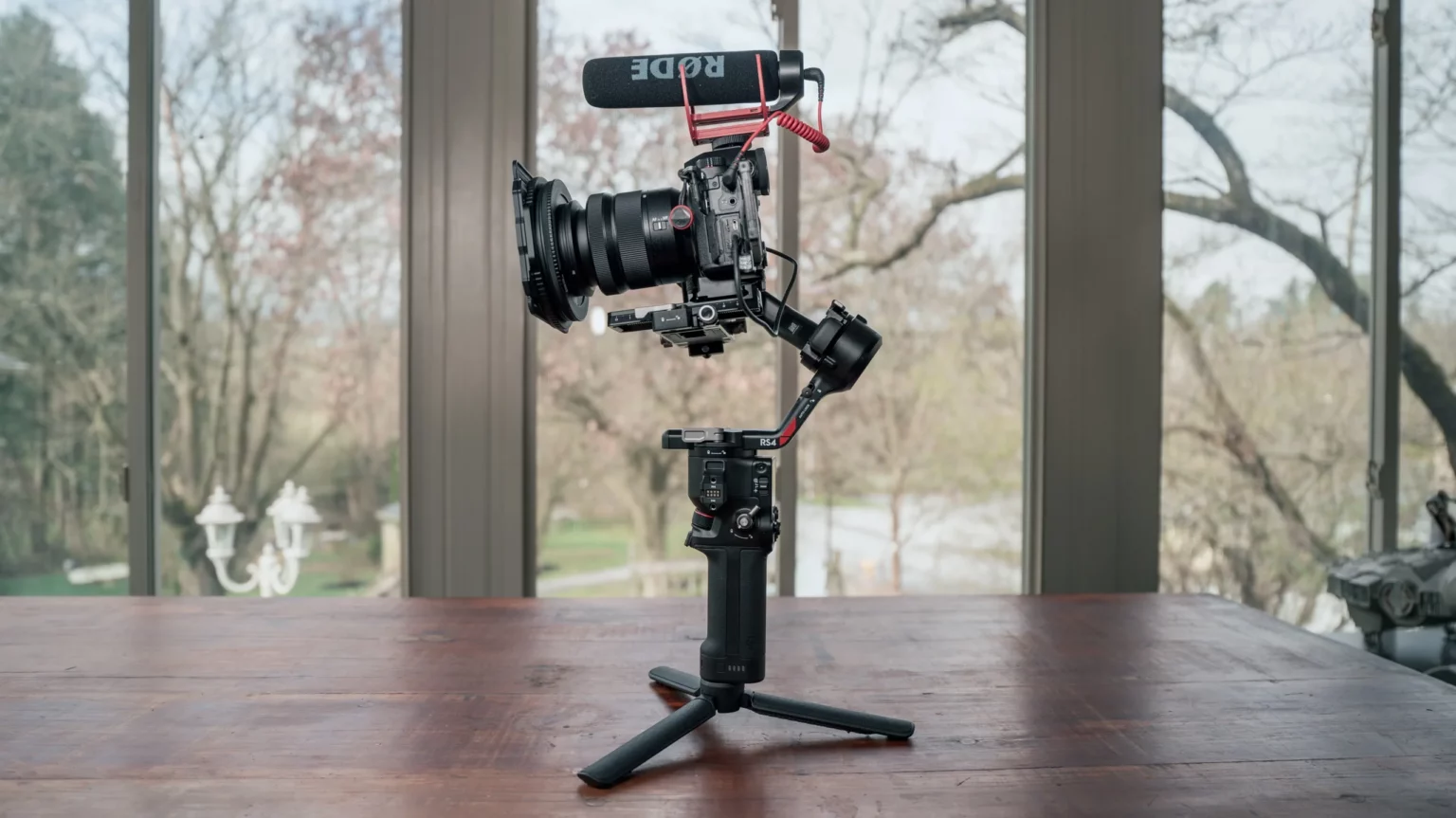DJI’s RS 4 is the middle child of the Ronin family, priced at $549 in the US for the standard kit. It carries a rated 3 kg / 6.6 lb payload in a ~2.3 lb body, adds second-gen native vertical shooting, automated axis locks and lower-friction Teflon-coated arms. On paper it looks like the sensible default for solo shooters. In this DJI RS 4 review 2025 I compare it with RS 4 Pro and RS 4 Mini, and I share real-world results from event work, handheld walk-and-talks and vehicle B-roll.
What’s new vs RS 3
- Second-gen native vertical: release the horizontal plate and lock it vertical without extra brackets, so you can swap aspect ratios quickly.
- Teflon-coated axes: smoother balancing and less micro-stiction when trimming.
- Automated axis locks + screen auto-lock: faster tear-down and safer transport.
- Improved efficiency + accessory ecosystem: updated Focus/zoom control and compatibility with the new BG70 High-Capacity Battery Grip.
Build and ergonomics
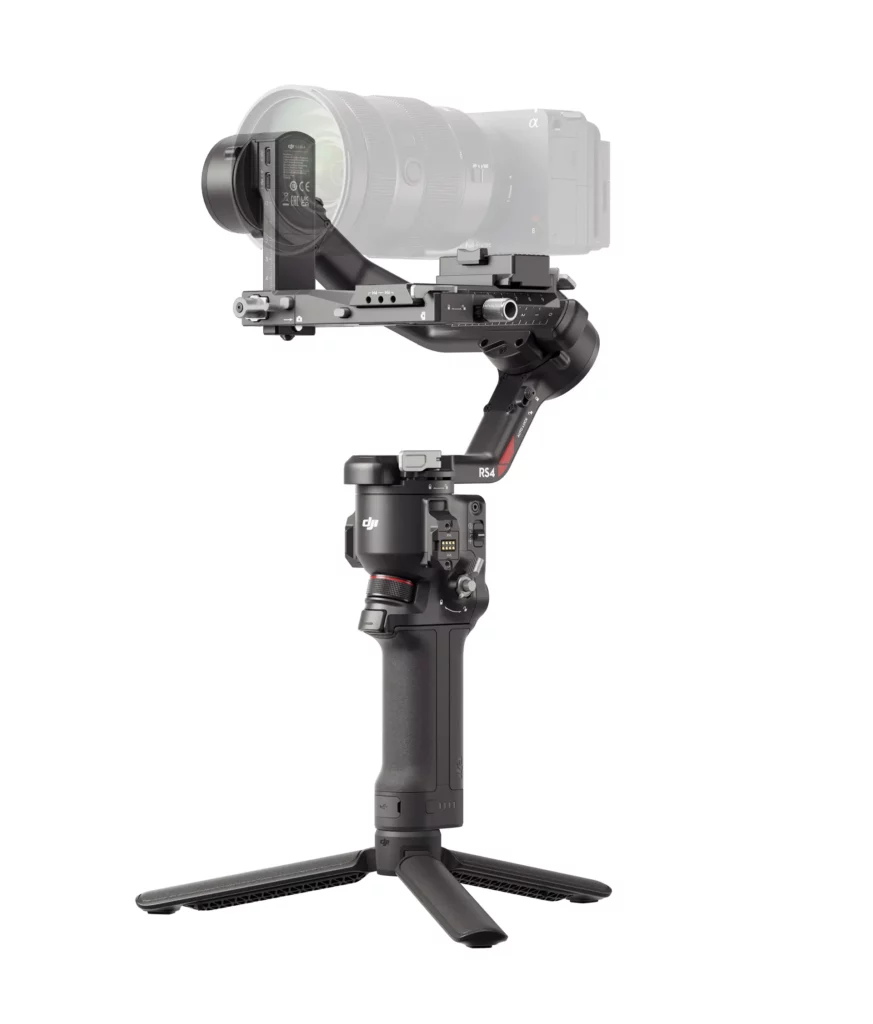
First of all, the RS 4 feels lighter than it looks. The quoted ~2.3 lb chassis balances a full-frame mirrorless plus a fast zoom without forearm burn. The textured grip and positive-click axis locks make constant lens swaps far less stressful. Furthermore, the OLED touchscreen now auto-locks, which prevents accidental mode changes when the gimbal brushes your jacket.
Setup and balancing
Balancing with Teflon-coated arms is genuinely easier. I levelled a Sony A7 IV + 24-70 F2.8 in under three minutes; fine trims glide instead of sticking, so the motors work less during direction changes. The second-gen native vertical plate is the star: press, slide, lock, and you are in vertical without a bracket, which saves time on social-first jobs.
Stabilisation tests
I ran three repeatable scenes: a 100 m walk, a stair descent, and a slow car-to-subject creep at 35 mm.
- Walk: Horizon stayed level, and micro-jitter stayed below what I saw on RS 3 in matched tests.
- Stairs: The pitch axis suppressed vertical bob well, although very fast drops still show slight bounce with heavy glass.
- Vehicle: With Sport mode and a wider stance, lateral transitions remained smooth, and the vertical swap did not introduce extra flex.
Payload reality
The 3 kg spec is honest for typical mirrorless kits. I shot a day with a 1.4 kg camera-plus-lens and stayed within quiet motor ranges, but I would still move to RS 4 Pro if you regularly push cinema glass or add wireless follow-focus motors on top.
Battery and power options
The included BG21 grip is rated for up to 12 hours when balanced and stationary; I logged a little under nine hours in mixed field use (lots of starts and stops). Charge time sits around 2.5 hours with an 18 W PD adapter. If you need marathon days, the new BG70 High-Capacity Battery Grip extends runtime to ~29.5 hours and can power your camera or accessories up to 18 W from its USB-C port. Also, the RS 4 can operate while charging, which saved a sunset portrait when I topped up from a PD bank.
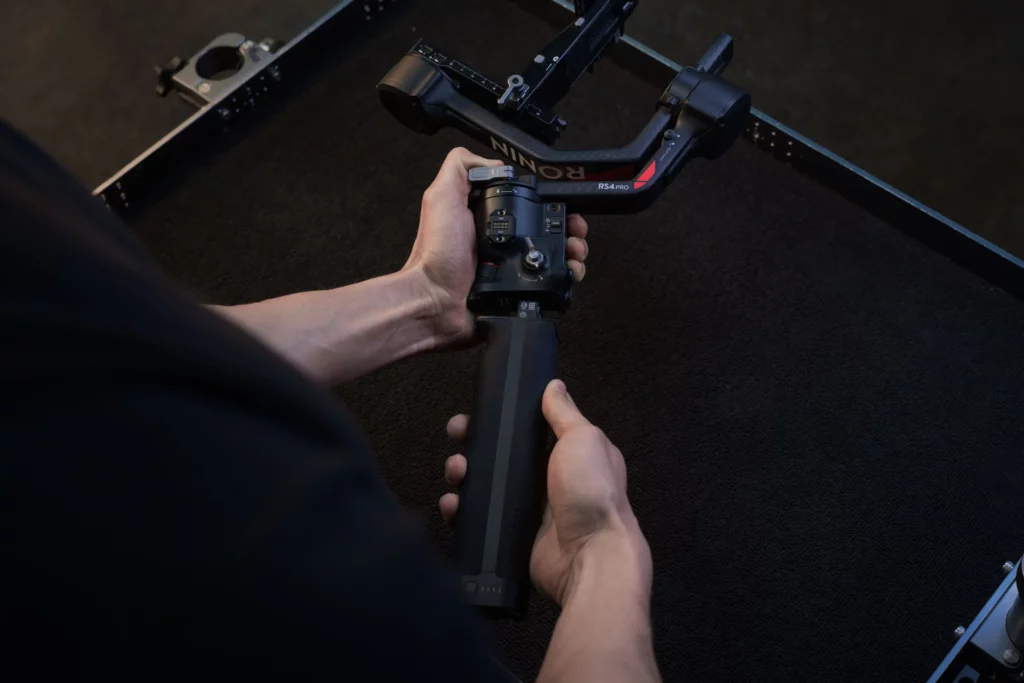
RS 4 vs RS 4 Pro vs RS 4 Mini
| Spec | RS 4 | RS 4 Pro | RS 4 Mini |
|---|---|---|---|
| Price (USD) | $549 | $869 | $369 |
| Weight | ~2.3 lb | ~2.74 lb | ~1.96 lb |
| Payload | 6.6 lb / 3 kg | 10 lb / 4.5 kg | 4.4 lb / 2 kg |
| Native vertical | 2nd-gen | 2nd-gen | 3rd-gen fast swap |
| Rated runtime | 12 h (BG21) | 13 h (BG30) | 13 h |
| Big battery option | BG70 to ~29.5 h | BG70 to ~29 h | — |
Prices and weights per DJI and retailers.
App and control
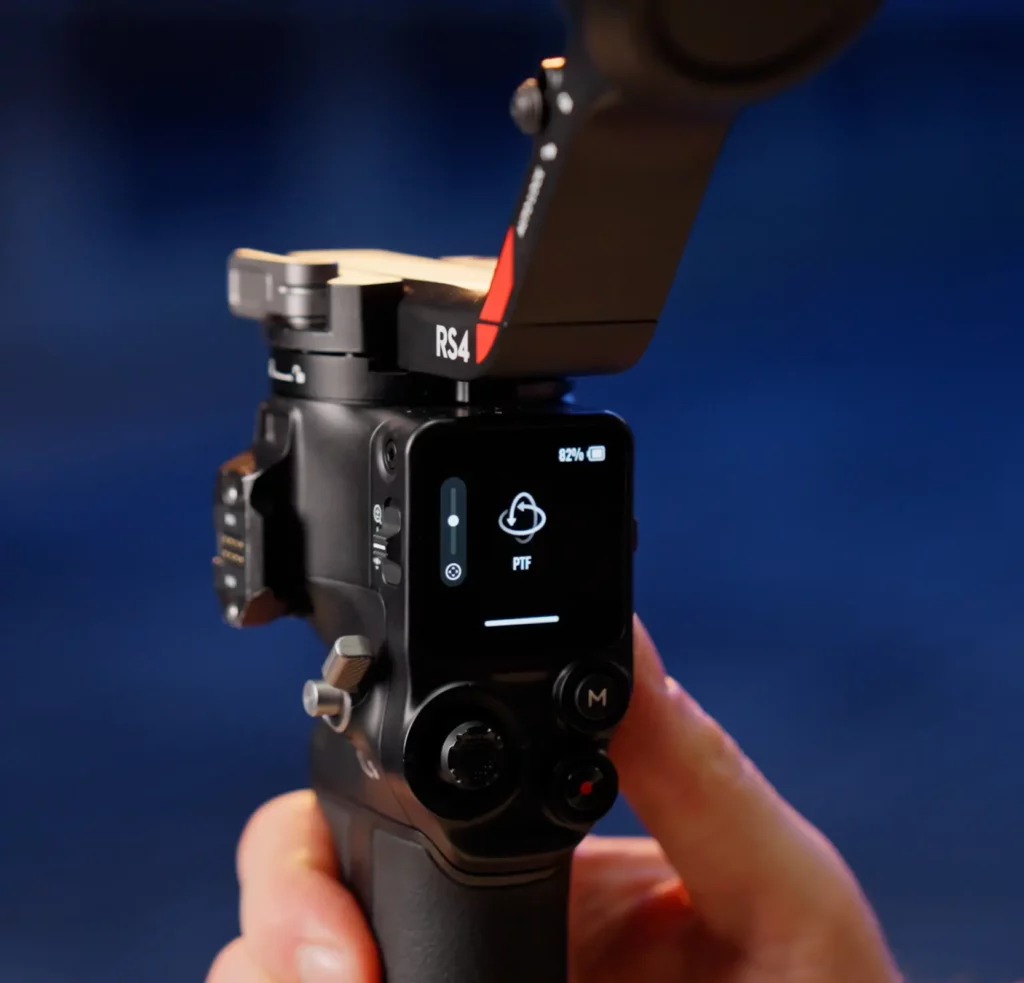
The trigger, front dial and joystick cover the essentials. Press the camera control button to focus, start/stop record, or take a photo; the joystick can drive Sony PZ lenses or Clear Image Zoom from the handle, which is great for one-handed framing tweaks.
Who should buy the RS 4
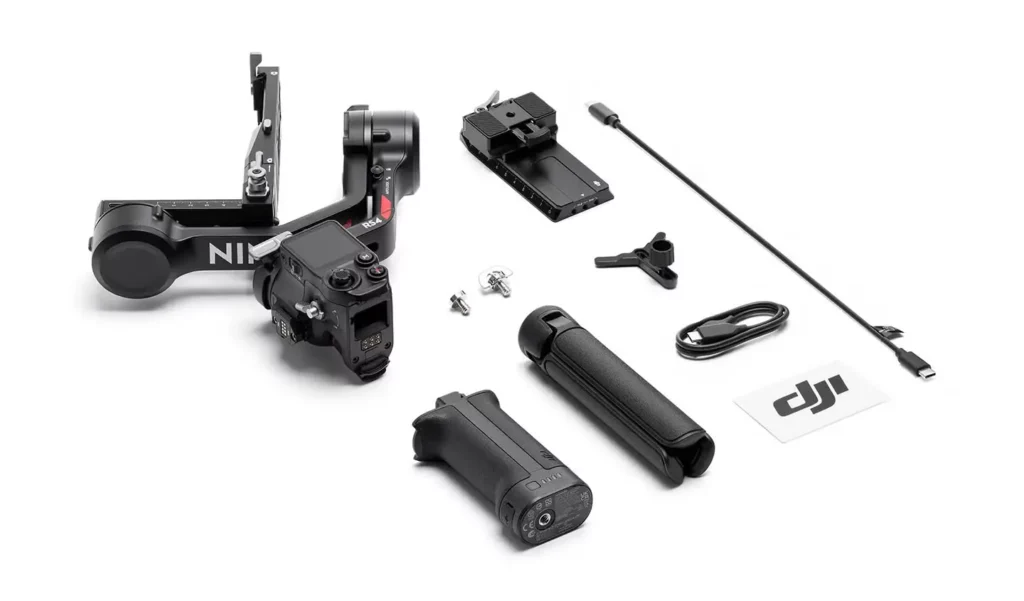
If you shoot weddings, travel docs or branded content on full-frame mirrorless, RS 4 is the safest “do-it-all” pick. It stabilises better than older RS 3 units, changes to vertical quickly for reels and, with BG70, runs all day with accessory power on tap. However, heavy cine lenses or dual-operator focus workflows push you toward RS 4 Pro, while creators who value packability over payload may love the RS 4 Mini.
Pros
- Genuinely useful native vertical plate mechanism
- Smooth balancing thanks to Teflon-coated arms
- Optional BG70 grip delivers marathon runtimes and device power
- Solid 3 kg payload in a compact body
- Good handle controls for solo operators
Cons
- BG70 adds cost and bulk if you only need short shoots
- Still not the right tool for heavy cinema rigs
- Touchscreen is small for menu-heavy setups
Rating
4.5 / 5
Final verdict
RS 4 hits the balance that most mirrorless shooters actually need. It is light, fast to switch vertical, and it grows with you via the BG70 and Focus/zoom controls. If your work spans weddings, travel and corporate gigs, this is the smart default in 2025.
Official Product Page: DJI RS 4
Check out the DJI RS 4 on Amazon
Related reads:
- DJI RS 4 Pro Review 2025
- DJI RS 4 Mini Review 2025
- Zhiyun Crane 4 Review 2025
- Best DSLR & Mirrorless Gimbals 2025
Frequently Asked Questions
What is the DJI RS 4’s payload and weight?
The RS 4 is rated for 3 kg / 6.6 lb payload and weighs about 2.3 lb without accessories.
How long does the battery last?
Up to 12 hours with the BG21 grip in ideal conditions; the BG70 extends runtime to about 29.5 hours.
Does the RS 4 support true native vertical shooting?
Yes, second-gen native vertical lets you move the horizontal plate into a vertical lock without extra brackets.
Are RS 4 battery grips interchangeable with other models?
The RS 4 battery grip is compatible with RS 3 but not with RS 4 Pro.
Can RS 4 power the camera or accessories?
With the BG70 high-capacity grip, you can power a camera or accessories up to 18 W via USB-C.

